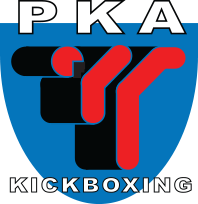Consider these facts. Does a marathon runner practice for the race by doing sprints? Does a scholar of chemistry study art? Does a child try to learn to write without a pen? Obviously the answer is no in every case. Train for the action you intend to perform.
Stretching in Martial Arts
For years in the Martial Arts static stretching (remaining in a stationary position often on the floor whilst holding a stretch at the point of pain) has long been the staple diet of achieving flexibility. This method has worked wonders for those who have persevered with it. The level of flexibility is usually less than amazing. However, some individuals whilst having a great degree of flexibility cannot reproduce that flexibility in a full power movement such as a high kick. Why is this?
Within human skeletal muscle there are two types of stretch receptor, one detects the degree and speed of stretching, the other detects just the degree only. This is why static stretching only improves static flexibility. To achieve dynamic flexibility (e.g. a powerful kick) dynamic stretching must be used in addition to static stretching.
Dynamic Stretching
Dynamic stretching by movements similar to the task e.g. leg raises before a lesson in kicking done with gradual increases in range of motion facilitate neural pathways that will be used in the main task. This movement also causes arterioles and capillaries to dilate thus increasing blood flow to the muscles being worked, an ideal warm-up in your Leicester PKA class.
Static Stretching
Static stretching at the start of a PKA class in the warm up does not fully facilitate these pathways and does not adequately prepare the nervous or blood systems for dynamic action.
You can feel this for yourself. You sweat differently when warming up with dynamic stretches compared to static ones. During dynamic exercises you sweat all over and the sweat is hot. During static stretching you sweat little and mainly on the face. This shows you static stretching is not an ideal warm-up.
Static stretching is better done during the cool-down session at the end of your Leicester PKA class. Muscles are thoroughly warmed up after your PKA class and the stretching helps remove lactic acid build up in the muscles, prevent muscle soreness the following day and helps elongate muscle to be stretched further the next time.
Please note : Static stretching during the warm up session is not wrong, just that it can be improved by doing dynamic stretches before hand.
